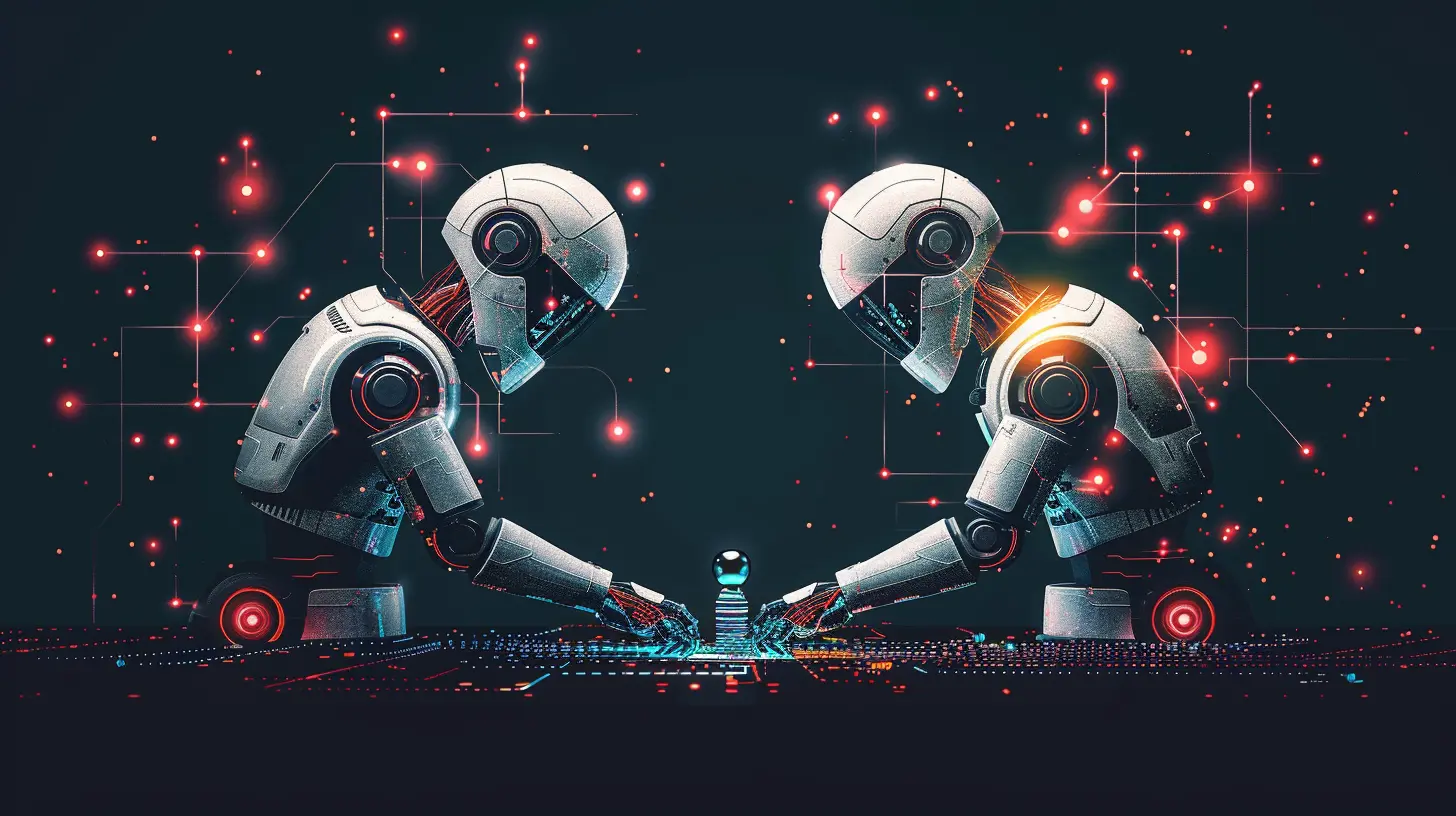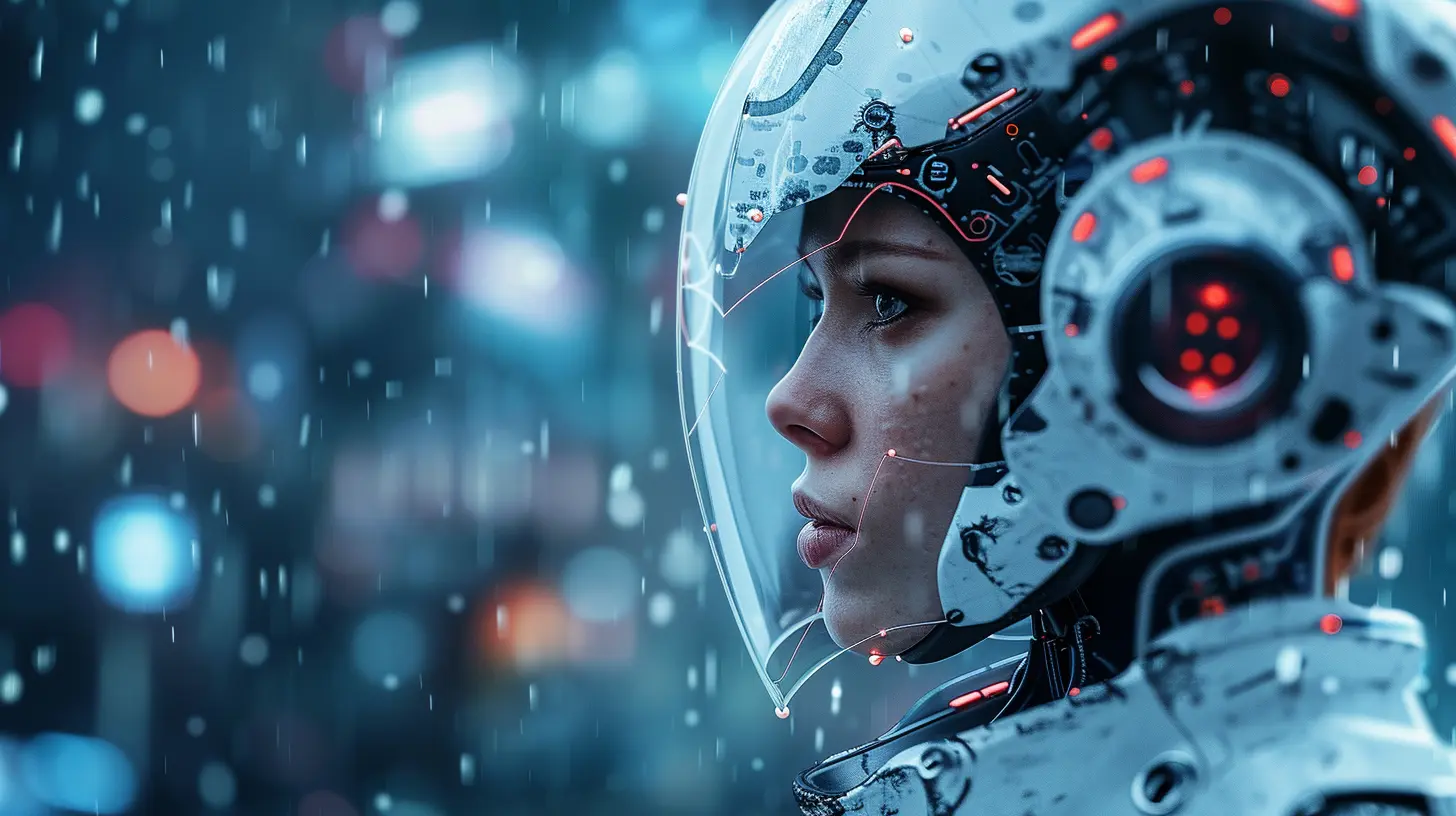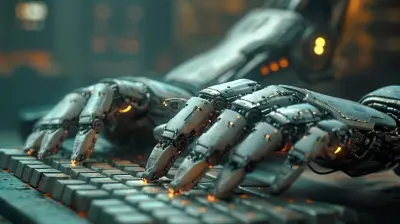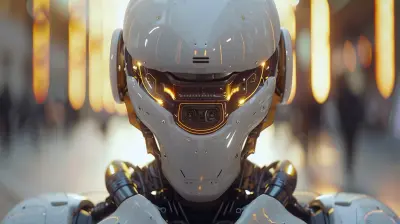The Rise of Reinforcement Learning: What You Need to Know
7 October 2025
Technology is evolving faster than your favorite streaming service can recommend the next must-watch series. And sitting at the forefront of this digital evolution is a powerful, fascinating, and maybe slightly misunderstood character—Reinforcement Learning. If you’ve ever wondered how AI can beat world champions at chess or teach robots to walk, this is it.
Whether you’re a curious tech enthusiast, a brave beginner, or someone who just loves throwing around fancy AI buzzwords at dinner parties, you're in the right place. Let’s break it down together—no Ph.D. required!
🧠 First Things First: What the Heck Is Reinforcement Learning?
Imagine trying to teach a puppy a new trick. Every time it does something right, you give it a treat. Over time, it starts doing the trick more often because it wants that treat. Simple, right?Well, Reinforcement Learning (RL) is a lot like that—except instead of a puppy, you have an AI agent. And instead of dog treats, you're rewarding it with points or virtual high-fives for doing its job well.
Here's the scoop:
- Agent: That’s your learner or decision maker (the AI brain).
- Environment: The world in which the agent operates.
- Action: The move the agent makes.
- Reward: The gold star or the slap on the wrist, depending on the action.
- Policy: A strategy or game plan that the agent follows to figure out what move to make next.
Sounds fun already, doesn’t it?
🛠️ How Does Reinforcement Learning Actually Work?
Let’s put on our nerdy glasses for a sec (just for a moment, I promise).Reinforcement Learning is all about trial and error. Think of it like playing a video game for the first time with no instructions. You mess up, you lose a life. You find a secret room? Bam—bonus points. Over time, you learn what works and what doesn’t.
The cool part? The AI agent remembers what worked and uses that knowledge to perform better over time. It builds up its strategy (a.k.a. policy) to maximize the total rewards it can earn.
There’s math behind it, yes—but at its core, it’s really just about learning by doing.
🚀 Why Is Reinforcement Learning Suddenly a Big Deal?
Reinforcement Learning has actually been around for a while. But why is everyone talking about it now, like it’s the main character in AI's coming-of-age movie?Here’s why RL is suddenly flexing its muscles:
- 💡 Massive Computational Power: Today’s computers are way faster and cheaper than they were a decade ago. RL needs a lot of juice, and now we've got it.
- 🧠 Big Data: The more data you have, the better the agent can learn. And let's face it—we're swimming in data.
- 🎮 Breakthrough Wins: RL shocked the world when DeepMind’s AlphaGo beat the world champion at Go. That wasn’t just impressive—it was historic.
- 🤖 Real-World Applications: From self-driving cars to smart factories, RL is turning heads in industries far and wide.
Think of it like this: Reinforcement Learning was the quirky sidekick in AI's story for years. Now, it’s stepping into the spotlight.
🔍 Types of Reinforcement Learning (Yep, There's More Than One)
Just like your favorite ice cream shop, RL comes in different flavors. Let’s scoop through the main types:1. Positive Reinforcement Learning
This is the “yay, you did great!” kind. The agent gets a reward for doing the right thing, which increases the chances it’ll repeat that behavior.🟢 Example: Your robot vacuum finds the dust bunny and gets a digital pat on the back. It’ll keep hunting those dust bunnies.
2. Negative Reinforcement Learning
This isn’t about punishment. It’s about removing something unpleasant when the agent does something good. Kinda like taking out the trash to stop the bad smell.🟡 Example: An AI in a game stops crashing into walls so it doesn’t lose points.
3. Q-Learning
This method involves an agent learning the value of actions in different situations. It creates a table (called a Q-table) that helps it decide what to do in the future.📊 Think of it like your personal cheat sheet for surviving high school—except it’s for robots.
🎯 Real-World Applications That’ll Blow Your Mind
Enough theory! Let’s talk about how RL is already making our world smarter and cooler.🏎️ 1. Self-Driving Cars
You knew this was coming.Self-driving cars use RL to make split-second decisions—when to brake, when to go, how to avoid that overly aggressive squirrel crossing the road.
By simulating thousands of driving scenarios, these cars get better at navigating without babysitting from humans.
🧬 2. Healthcare
Yep, even doctors are getting AI sidekicks.RL is being used to optimize chemotherapy treatment plans, design new drugs, and even help in robotic surgeries. It’s like having a super-smart assistant who never needs coffee breaks.
📦 3. Robotics and Manufacturing
Robots on assembly lines are learning how to work faster and more efficiently with RL—reducing waste, improving accuracy, and yes, replacing the lunchroom gossip with machine learning.🕹️ 4. Video Games and Simulations
Ever wonder how game AI seems creepily smart? Reinforcement Learning.From NPCs that adapt to your playstyle to enemy bots that actually learn your moves, RL is turning games into living, breathing worlds.
💸 5. Finance and Trading
Wall Street, meet HAL 9000.RL is being used to optimize trading strategies, manage portfolios, and even predict market trends (though let’s be honest, the market still loves being unpredictable).
🧗♀️ Challenges in Reinforcement Learning: Not All Sunshine
As amazing as RL sounds, it’s not without its quirks—and a few big hurdles.- It Needs LOTS of Data: Like, “gimme a warehouse of data” kind of lots.
- Slow Learning Curve: RL agents can take forever to get good at something—like trying to train your cat to take selfies.
- Exploration vs. Exploitation: Should the agent try something new or stick with what it knows? It's a dilemma that even humans struggle with.
- Real-World Testing Is Risky: You can’t exactly let an AI car learn by crashing into things just to "figure it out"—safety matters.
Still, researchers are making huge strides every day to make RL safer, faster, and more efficient. It’s only going to get better from here.
🔮 What’s Next for Reinforcement Learning?
Okay, so what’s on the horizon? Here’s where things get exciting.- Multi-Agent Systems: Think Hunger Games, but it’s AI agents interacting, competing, or cooperating in the same environment.
- Transfer Learning: RL agents that can take what they've learned in one task and apply it somewhere else. Like using your Mario Kart skills in real-world driving (alright, maybe not the banana peels).
- Human-in-the-Loop RL: Combining human insights with machine learning to get the best of both worlds. Tag-team, anyone?
The line between science fiction and reality is getting blurrier by the day—and RL is right at the center of it.
💬 Final Thoughts: Should You Care About Reinforcement Learning?
Absolutely. Whether you're an aspiring AI developer, a business owner, or just someone who loves seeing where tech is headed, reinforcement learning is something worth watching.It’s not just a fad—it’s a fundamental shift in how machines learn and interact with the world.
And here's the best part? You don’t need to be a genius to understand or appreciate it. Start small, stay curious, and you’ll find that RL is not just fascinating—it’s downright fun.
So next time someone brings up AI at a party, you can casually say, “Pfft, reinforcement learning? Let me break it down for you…”
📚 Extra Reading (For the Super Curious Folks)
If you’re itching to go beyond the basics, here are a few topics you might want to Google later:- Monte Carlo Methods
- Deep Q-Networks (DQNs)
- Policy Gradient Methods
- OpenAI Gym (a playground for RL experiments
all images in this post were generated using AI tools
Category:
Machine LearningAuthor:

Ugo Coleman
Discussion
rate this article
1 comments
Gwen Wilkerson
Thank you for this insightful article on reinforcement learning! The clear explanations and real-world examples truly highlight its potential and significance in various fields. I'm excited to see how this technology evolves and impacts future innovations. Keep up the great work in sharing such valuable information!
October 7, 2025 at 4:53 AM

Ugo Coleman
Thank you for your kind words! I'm glad you found the article insightful and useful. Exciting times ahead for reinforcement learning!


